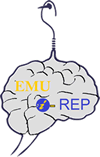JavaScript is disabled for your browser. Some features of this site may not work without it.
| dc.contributor.author | Sakallı, İzzet | |
| dc.date.accessioned | 2016-01-12T15:37:09Z | |
| dc.date.available | 2016-01-12T15:37:09Z | |
| dc.date.issued | 2013 | |
| dc.identifier.citation | “Quasinormal Modes of Charged Dilaton Black Holes and Their Entropy Spectra”, Izzet Sakalli, Mod. Phys. Lett. A 28, 1350109 (2013). | en_US |
| dc.identifier.issn | 0217-7323 | |
| dc.identifier.other | DOI: 10.1142/S0217732313501095 | |
| dc.identifier.uri | http://dx.doi.org/10.1142/S0217732313501095 | |
| dc.identifier.uri | http://hdl.handle.net/11129/1965 | |
| dc.description | The file in this item is the post-print version of the article (author’s copy; author’s final manuscript, accepted for publication after peer-review process). Due to copyright restrictions, the access to the publisher version (published version) of this article is only available via subscription. You may click URI (with DOI: 10.1142/S0217732313501095) and have access to the Publisher Version of this article through the publisher web site or online databases, if your Library or institution has subscription to the related journal or publication. | en_US |
| dc.description.abstract | In this study, we employ the scalar perturbations of the charged dilaton black hole (CDBH) found by Chan, Horne and Mann (CHM), and described with an action which emerges in the low-energy limit of the string theory. A CDBH is neither asymptotically flat (AF) nor non-asymptotically flat (NAF) spacetime. Depending on the value of its dilaton parameter "a", it has both Schwarzschild and linear dilaton black hole (LDBH) limits. We compute the complex frequencies of the quasinormal modes (QNMs) of the CDBH by considering small perturbations around its horizon. By using the highly damped QNMs in the process prescribed by Maggiore, we obtain the quantum entropy and area spectra of these BHs. Although the QNM frequencies are tuned by "a", we show that the quantum spectra do not depend on "a", and they are equally spaced. On the other hand, the obtained value of undetermined dimensionless constant {\epsilon} is the double of Bekenstein's result. The possible reason of this discrepancy is also discussed. | en_US |
| dc.language.iso | en_US | en_US |
| dc.publisher | Modern Physics Letters A, World Scientific Publishing | en_US |
| dc.relation.ispartofseries | World Scientific;Modern Physics Letters A, 2013, vol. 28, issue 27, p 1, | |
| dc.subject | general relativity | en_US |
| dc.subject | black holes | en_US |
| dc.subject | entropy spectra | en_US |
| dc.subject | Quasinormal modes | en_US |
| dc.subject | General Relativity and Quantum Cosmology | en_US |
| dc.title | Quasinormal modes of charged dilaton black holes and their entropy spectra | en_US |
| dc.type | Article | en_US |
| dc.description.version | Post-Print Author Version; (Final Author Manuscript, accepted for publication, after peer-review process). |









